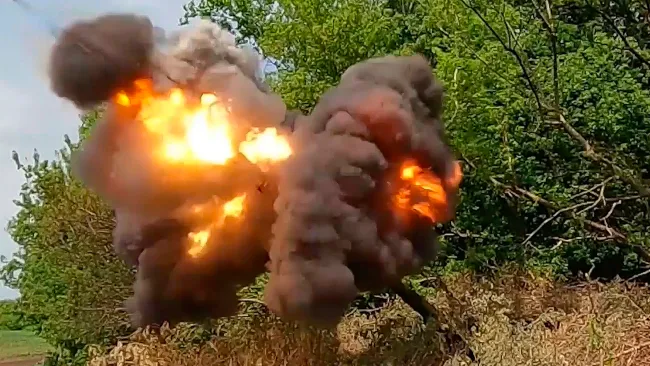Support truly
independent journalism
Support Now
Our mission is to deliver unbiased, fact-based reporting that holds power to account and exposes the truth.
Whether $5 or $50, every contribution counts.
Support us to deliver journalism without an agenda.

Louise Thomas
Editor
A desperate search and rescue operation is underway in Nepal after a landslide swept two buses carrying 66 people into a swollen river.
The buses were travelling on a highway from Madan to Ashrit amid torrential monsoon rain when they were struck by a landslide near Simaltal, about 120km west of the capital Kathmandu, at around 3am on Friday.
One bus had started with 24 people on board and the other with 42. But more passengers could have boarded along the way.
Government administrator Khima Nanada Bhusal said three passengers reportedly jumped into the Trishuli river and swam to safety. They were rescued by local residents and taken to a nearby hospital for treatment.
Mr Bhusal said landslides blocked the road leading to the site of the disaster, hindering search and rescue work.
Nepal’s prime minister, Pushpa Kamal Dahal, said he had directed all agencies to search and effectively rescue the passengers. “I am deeply saddened by the loss of nearly five dozen passengers and the loss of property due to floods and landslides in different parts of the country,” he said.

The Nepali army shared videos of the search operation showing rescuers attempting to navigate the gushing waters of the Trishuli river in rafts.
A series of landslides in the South Asian country have caused at least seven deaths in recent days.
In a separate incident on the same highway, a bus was knocked by a landslide. The driver was injured and died in hospital later.
Nepal, nestled in the Himalayas, experiences severe weather conditions during the monsoon season from June to September. The rains bring flash floods, lightning strikes and landslides, killing dozens of people nearly every year.
This year, at least 62 people were killed in rain-related incidents in June alone, the home ministry said on 7 July.
Nepal’s topography and extensive river network make it highly susceptible to disasters, a situation that is likely worsened by climate change.
According to the UN Office for Disaster Risk Reduction, the number of disasters worldwide is projected to rise by 40 per cent from 2015 to 2030.
Disclaimer: The copyright of this article belongs to the original author. Reposting this article is solely for the purpose of information dissemination and does not constitute any investment advice. If there is any infringement, please contact us immediately. We will make corrections or deletions as necessary. Thank you.




